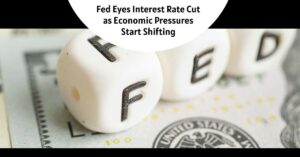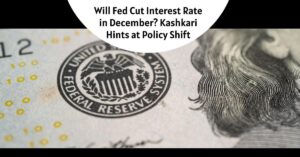Freddie Mac's recent forecast paints a picture of a housing market in transition. While the U.S. economy maintains a forward momentum, its pace has eased, and inflation remains a pressing concern for the Federal Reserve. These factors are likely to keep mortgage rates elevated for most of 2024, impacting affordability and potentially dampening homebuyer enthusiasm.
Breaking Down Latest Mortgage Predictions
Mortgage Rates: A Plateau Above 6.5%
Fasten your seatbelts for a period of prolonged high borrowing costs. Freddie Mac predicts mortgage rates to hover above 6.5% for the remainder of 2024. This is a modest improvement compared to the peaks of 7.8% witnessed in 2023, but it still represents a significant hurdle for potential homebuyers. With affordability already strained, these rates could sideline some buyers from the market, particularly those who were counting on historically low rates to qualify for a loan.
Home Sales: Stalled Momentum
The housing market is expected to experience a muted performance in the coming months. While demand, particularly from first-time homebuyers, remains steady, affordability constraints will likely put a damper on overall sales activity. This is due to the combined effect of high mortgage rates and rising home prices, making it more challenging for many to qualify for a loan or fit a monthly payment within their budget. First-time homebuyers may find themselves priced out altogether, or forced to make significant concessions in terms of location or property size.
Home Prices: Defying Gravity
Despite the anticipated slowdown in sales, Freddie Mac predicts that unwavering demand and limited housing supply will continue to push home prices higher in both 2024 and 2025. This is a surprising trend in a cooling market, but it highlights the persistent imbalance between available homes and eager buyers. First-time homebuyers may find themselves competing for a smaller pool of available properties, potentially driving prices even higher due to bidding wars. This could further squeeze out some buyers from the market.
Mortgage Origination: A Mixed Bag
Purchase originations, which represent mortgages for new home purchases, might see a slight increase in 2024 compared to 2023. This is primarily driven by the projected rise in home prices, even if the number of transactions dips. However, this doesn't necessarily translate to a surge in homeownership rates. Refinance activity, on the other hand, is expected to remain minimal due to the current high-rate environment. With many homeowners already locked into historically low rates, there's little incentive to refinance at a significantly higher cost.
A Glimpse of Hope: Potential Rate Cut
A glimmer of hope exists in the form of a possible rate cut by the Federal Reserve later in 2024. This scenario hinges on the job market cooling down sufficiently to bring inflation under control. If this occurs, it could lead to a gradual decrease in mortgage rates, offering some much-needed relief to potential homebuyers. However, the Federal Reserve will need to carefully navigate this decision to avoid jeopardizing economic progress.
Challenges for Aspiring Homeowners
Affordability remains a significant hurdle for many aspiring homeowners. The current market presents a double whammy: rising interest rates that increase monthly mortgage payments and high home prices that stretch budgets thin. Additionally, trade-up buyers, who might typically sell their existing home to purchase a new one, are likely to stay put. This is because giving up their current low mortgage rates for a higher rate on a new property creates a financial disincentive to move. This inertia within the market could further limit the available housing stock for first-time buyers.
The Bottom Line: Strategic Considerations
The housing market is entering a period of adjustment, and strategic planning is crucial for prospective buyers. Be prepared for a competitive market with potentially higher costs due to elevated mortgage rates. Patience may be a virtue, as waiting for a potential rate cut later in the year could present a more favorable borrowing environment.
However, economic factors are fluid, and there's no guarantee of a significant decrease in rates. Aspiring homeowners should weigh these factors carefully, considering their budget and long-term financial goals, before making a move. It may also be beneficial to consult with a mortgage professional to explore loan options and determine their borrowing power in the current climate.
By carefully considering these predictions and remaining adaptable, aspiring homeowners can increase their chances of navigating this complex market and achieving their dream of homeownership.
ALSO READ:
- Predictions: Can Porting Your Mortgage Get You a Lower Interest Rate?
- Mortgage Rate Predictions: Can Assumable Mortgages Offer Hope in 2024?
- High Interest Rates Predicted But is Zero Down Payment Possible?
- Interest Rate Predictions for Next 2 Years: Expert Forecast
- Interest Rates Predictions for 5 Years: Where Are Rates Headed?
- Mortgage Rate Predictions for Next 5 Years
- Mortgage Rate Predictions for the Next 2 Years
- Mortgage Rate Predictions for Next 3 Years: Double Digit Rise










